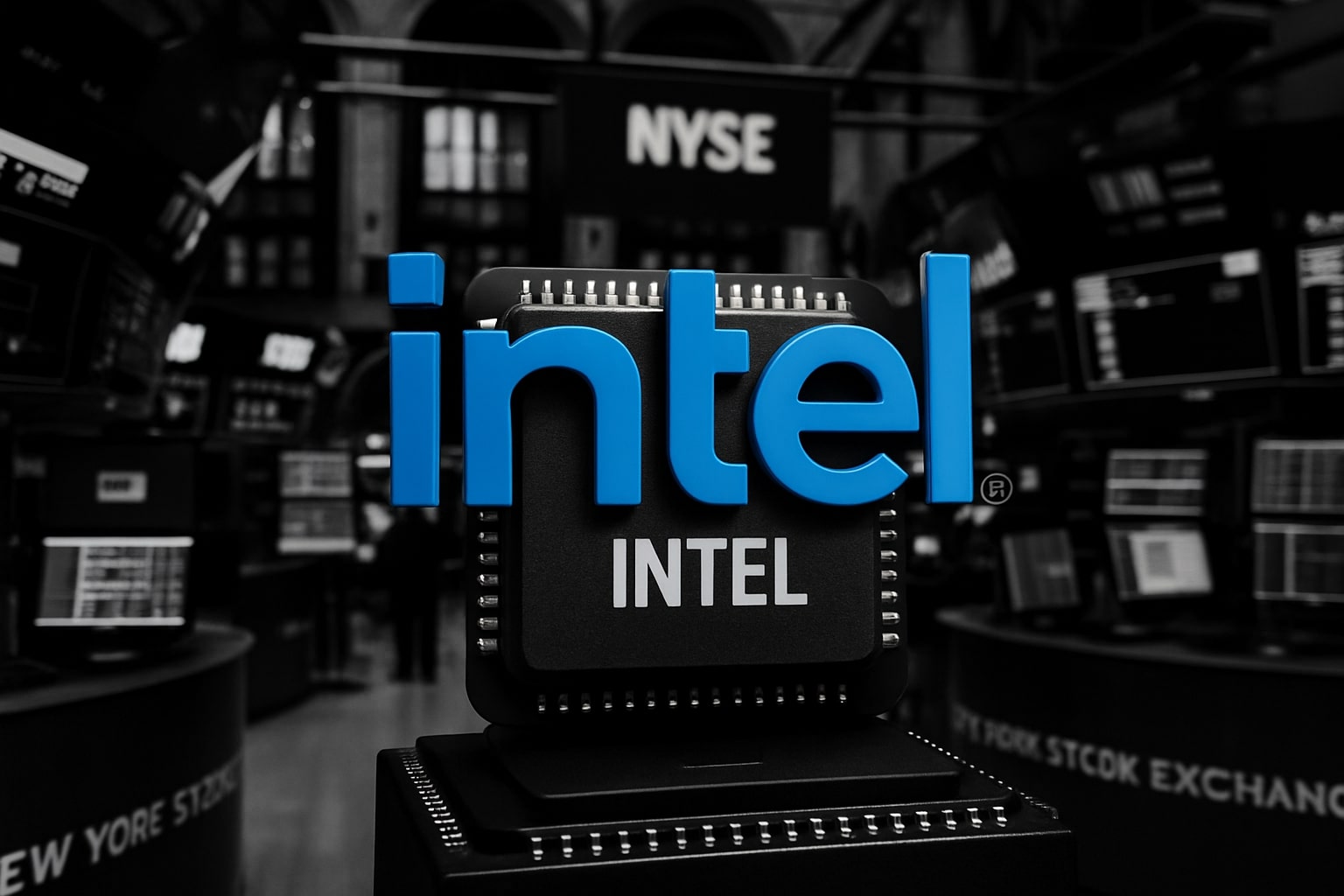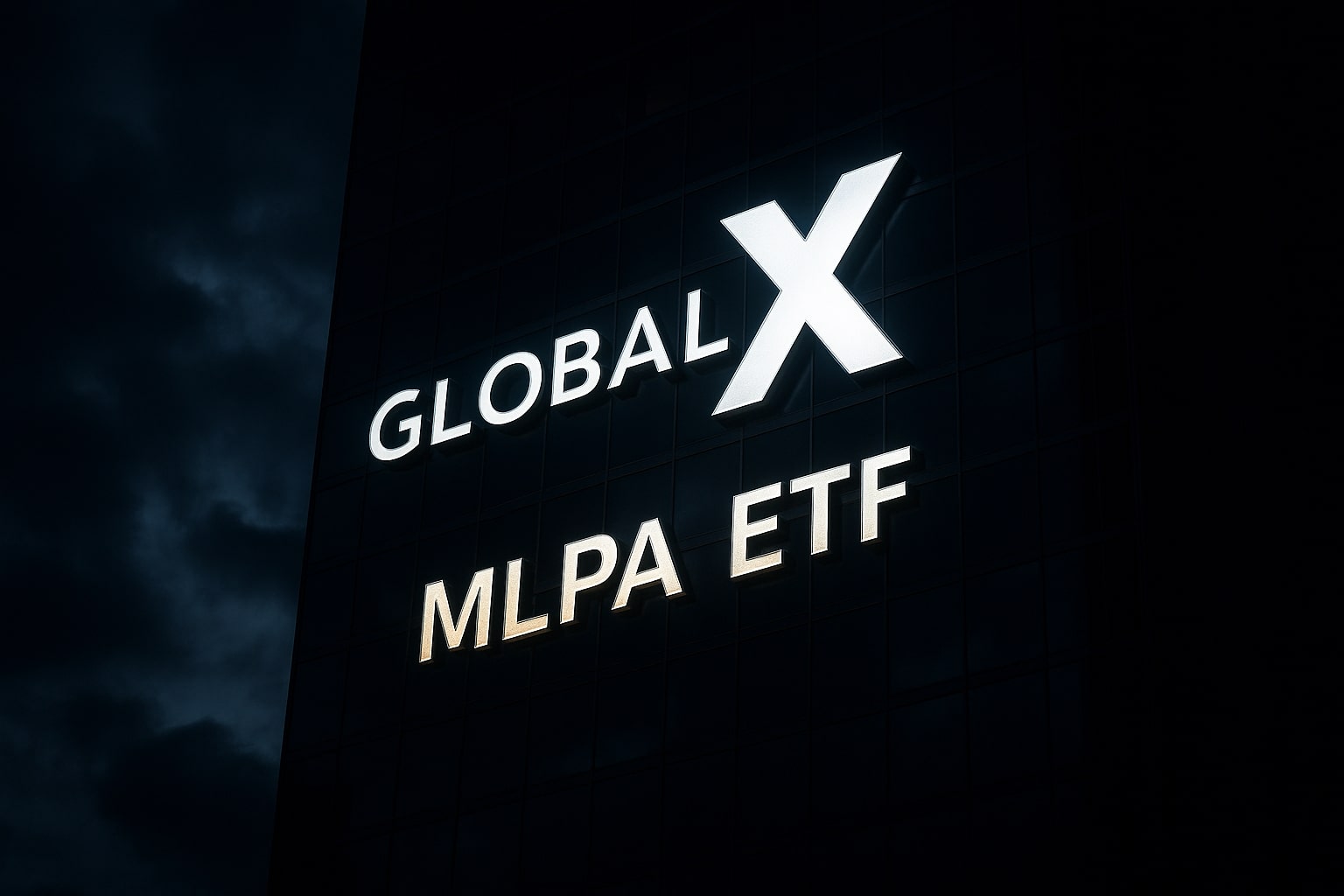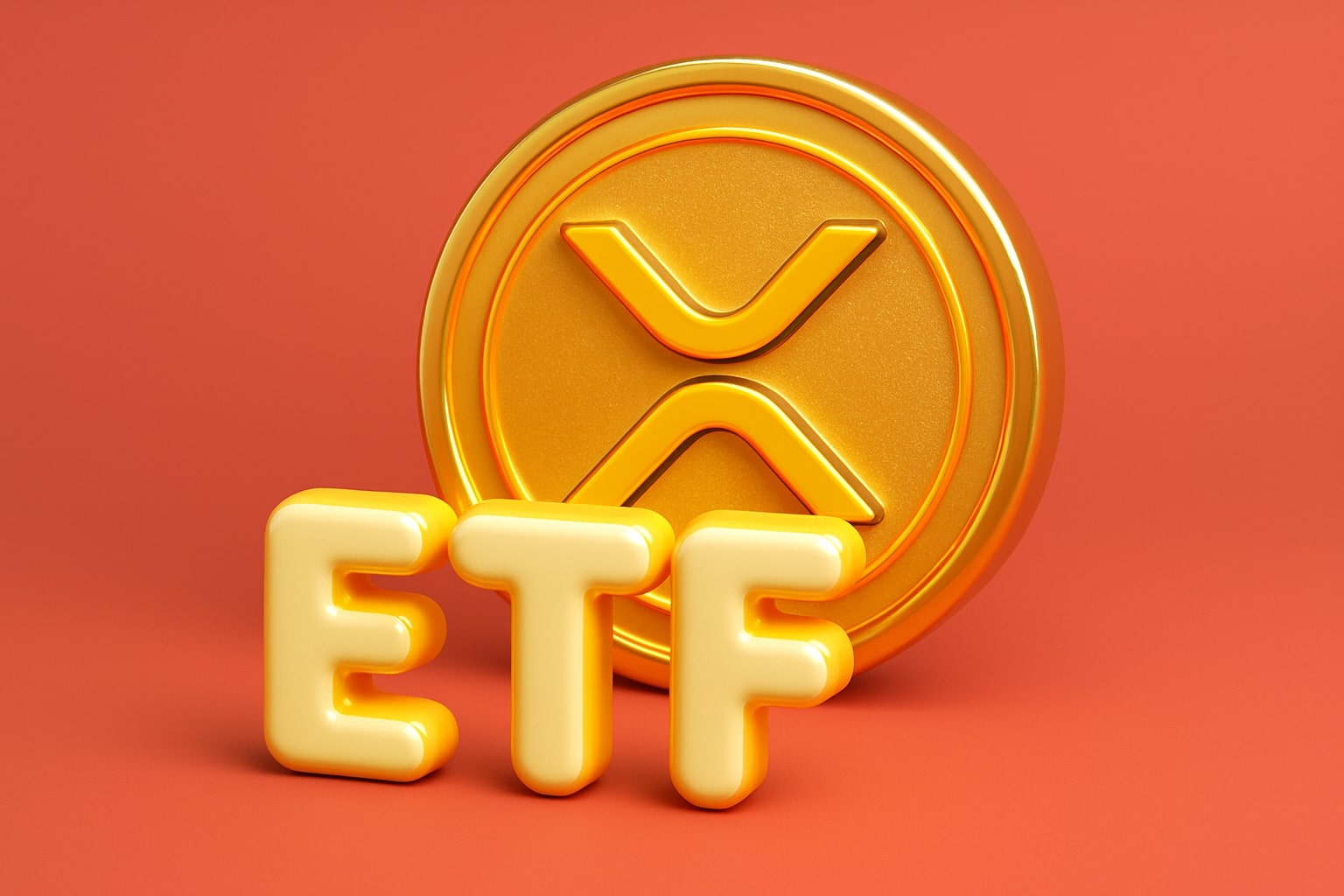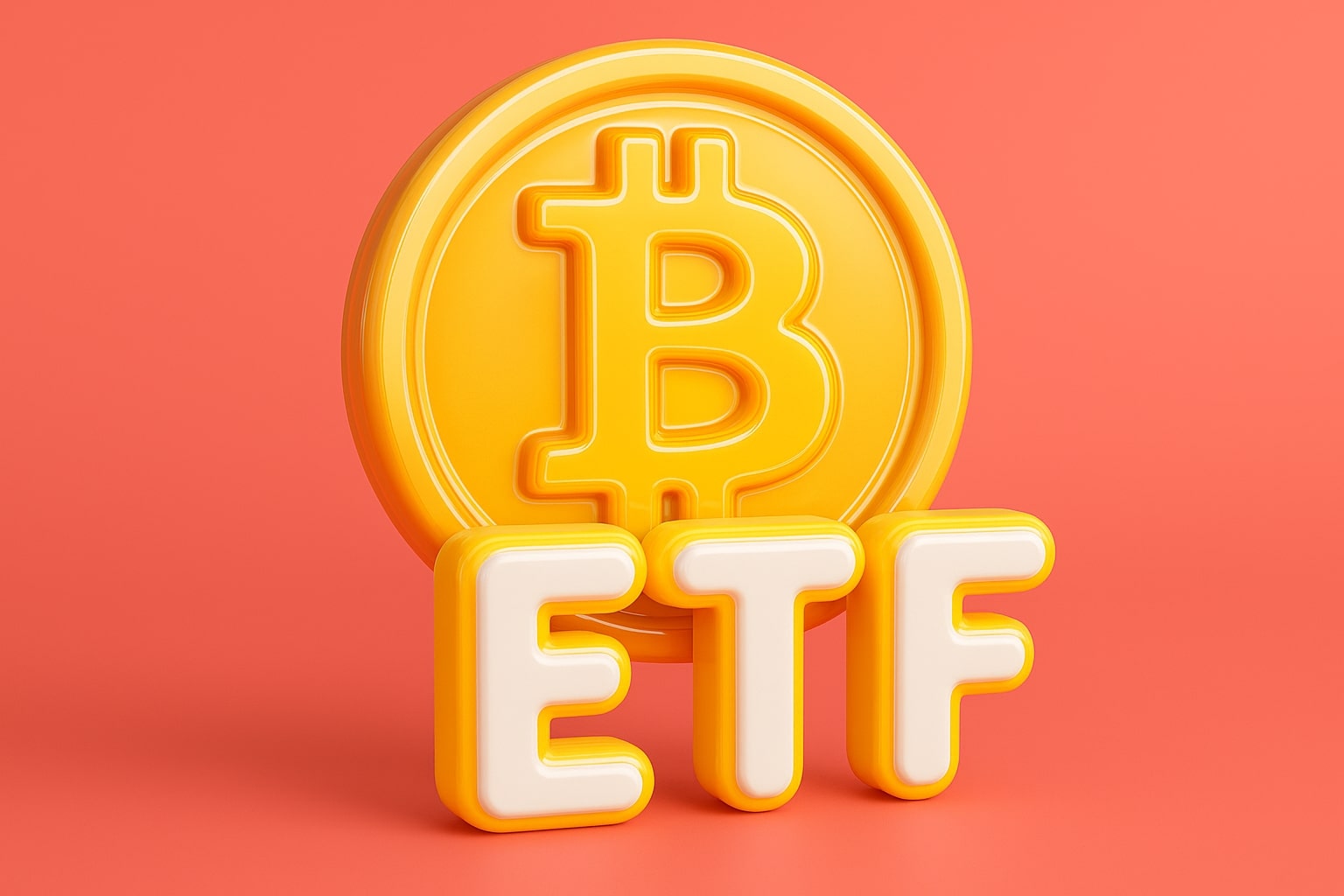
Intel Stock Price Forecast - INTC Eyes $48 as U.S. Stake and 18A AI Chips
Intel stock hovers at $36.78, up 83% YTD, Analysts project a $32.50–$48 trading range through 2026, with EPS expected to climb 426% YoY | That's TradingNEWS
Intel (NASDAQ:INTC): America’s $100B Silicon Revival Gains Power as AI, Energy, and Sovereign Capital Converge
Intel Surges 80% YTD as U.S. Government, Nvidia, and SoftBank Fuel Historic Turnaround
Intel Corporation (NASDAQ:INTC) has staged one of the most dramatic comebacks in recent U.S. equity history, climbing 83.14% year-to-date to around $36.78 per share, outperforming the S&P 500’s +12.6% gain by a wide margin. The stock briefly touched a 52-week high of $39.65, recovering from a cycle low of $17.67, as America’s semiconductor policy, AI demand, and private-public investment flows converge behind a single industrial goal — restoring the nation’s chip sovereignty.
Washington’s 9.9% equity stake, purchased at $20.47 per share for 433 million shares, alongside $8.9 billion in CHIPS Act funding and $3 billion under the Secure Enclave program, has transformed Intel into a de facto sovereign manufacturer. The federal investment includes warrants to acquire an additional 5% stake if ownership of the foundry unit drops below majority level, effectively binding the company’s future to national defense and semiconductor autonomy.
Backing from Nvidia (NVDA) with a $5 billion stake and SoftBank’s (SFTBY) $2 billion injection further underscores institutional conviction. Both are betting that Intel’s 18A and 14A process nodes will become the first scalable, Western alternative to Asia’s TSMC and Samsung fabs.
18A Breakthrough: Panther Lake and Clearwater Forest Mark Intel’s Return to Process Leadership
Intel’s new Panther Lake (Core Ultra 3) and Clearwater Forest (Xeon 6+) chips, built using its in-house 18A process, signal a comeback to technology leadership. Manufactured at the company’s new Fab 52 facility in Arizona, the 18A node employs RibbonFET and PowerVia innovations — transistor technologies that boost current flow efficiency and power management.
The Core Ultra 3 line, set to ship before year-end, introduces configurations ranging from 8 to 16 CPU cores and up to 12 Xe3 GPU cores, offering 50% faster graphics and 10% stronger single-thread performance over prior generations. Its integrated NPU5 AI engine handles 50 trillion operations per second (TOPS) — up from 48 TOPS in the previous Lunar Lake generation — while cutting die size and improving energy efficiency.
On the server side, the Xeon 6+ will feature up to 288 E-cores per socket, doubling density over the prior Xeon 6, and increasing instructions per clock (IPC) by 17% via the new Darkmont architecture. With shipments expected in mid-2026, the chip is tailored for AI data centers and edge robotics, leveraging Foveros 3D stacking and EMIB interconnects that merge GPU, CPU, and NPU modules in a single system-on-chip (SoC).
The $100B Ohio Fab: Energy, Silicon, and Geopolitics Converge
Intel’s Ohio manufacturing campus, projected to attract $100 billion in investment through the next decade, is becoming the geographic and strategic anchor of U.S. semiconductor independence. Phase one expenditures of $28 billion are already under way, backed by long-term clean power purchase agreements (PPAs) ensuring energy stability — a key bottleneck for future AI data centers.
Global AI data infrastructure could consume 130 GW of power by 2030, according to the Institute of Progress. By securing energy at the fab level, Intel effectively merges energy security with chip sovereignty — creating an economic moat that pure-play GPU competitors like Nvidia (NVDA) or AMD (AMD) cannot replicate.
This alignment of fiscal, industrial, and defense strategy effectively guarantees long-term baseline demand. Analysts now consider Intel not merely a chipmaker but a sovereign manufacturing asset, echoing the 20th-century aerospace boom in strategic importance.
Financial Reality: Revenue Beats, EPS Miss, and Expensive Re-Rating
Intel’s Q2 2025 results painted a mixed picture: a net loss of $0.10 per share, missing expectations by $0.11, on $12.86 billion in revenue, beating forecasts by nearly $1 billion. Revenue grew 0.5% year-over-year, marking a return to growth after six quarters of decline, while gross profit hit $17.47 billion for the trailing twelve months.
Despite operating losses, investors are rewarding the turnaround narrative. The company trades at a forward P/E of 56.5, price-to-sales ratio of 3.04, and price-to-book of 1.81 — valuations implying future growth more than current fundamentals. Intel’s negative 38.6% profit margin and -18.6% return on equity show the cost of transformation, yet institutional inflows and strategic capital suggest markets are willing to fund the transition.
Major institutional moves in Q2 included Norges Bank’s $1.58 billion position, Nuveen’s $538 million, Kingstone Capital’s $345 million, and Goldman Sachs’ 133% increase in holdings, bringing total institutional ownership to 64.53% of outstanding shares — a remarkable vote of confidence amid deep operational red ink.
Wall Street’s Divide: Valuation Euphoria Meets Execution Risk
Wall Street remains split. TD Cowen raised its price target from $20 to $35, UBS boosted its target to $40, while HSBC downgraded the stock to Reduce with a $24 target, citing overvaluation. The average 12-month consensus stands at $26.37, implying a 30% downside from current trading levels.
Still, momentum has defied expectations. Intel’s beta of 1.33 signals elevated volatility, while short interest sits at 2.13%, relatively low for such a heavily debated turnaround. Analysts now expect FY2025 EPS of $0.12, rising to $0.63 in 2026, reflecting more than 400% projected earnings growth, contingent on 18A yield execution and foundry customer wins.
Read More
-
MLPA ETF (NYSEARCA:MLPA) Holds $49.09 With 7.71% Yield And Rising Midstream Revenues Signal Further Upside
30.11.2025 · TradingNEWS ArchiveStocks
-
Ripple’s XRPI And XRPR ETFs Rise As XRP Hits $2.19 With $164 Million In ETF Inflows And 29% Supply Drop
30.11.2025 · TradingNEWS ArchiveCrypto
-
Natural Gas Price Forecast (NG=F) Breaks Higher Above $4.85 As Cold Weather and Record LNG Exports Drive a Bullish Winter Setup
30.11.2025 · TradingNEWS ArchiveCommodities
-
USD/JPY Price Forecast - Dollar to Yen (¥156.70) Surges Toward ¥160 as Japan’s Finance Chief Warns of Speculative Yen Moves
30.11.2025 · TradingNEWS ArchiveForex
Foundry 2.0: Competing for Global AI Contracts
Intel’s Foundry Services (IFS) business is the linchpin of its transformation. With TSMC (NYSE:TSM) and Samsung (OTC:SSNLF) operating near full capacity, Intel’s 18A nodes are attracting AI hyperscalers seeking alternatives. Nvidia’s manufacturing collaboration extends beyond equity investment — Intel will now fabricate custom x86 server CPUs optimized for Nvidia’s AI systems, integrating Grace Hopper-class GPUs with Intel silicon.
This partnership alone could recapture a portion of the AI data center CPU market, where Intel’s unit share fell 3.2 percentage points year-over-year in Q2, while revenue share declined 7.2 points. Given that x86-based chips will account for 77% of the global AI server CPU market in 2025, Intel’s re-entry via Nvidia represents a direct revenue pipeline that bypasses AMD’s dominance.
Insider and Government Links Reinforce Structural Support
Insider activity reflects confidence, with federal ownership now solidifying the company’s balance sheet through direct equity exposure. Intel’s alignment with national industrial policy — from the CHIPS Act to Department of Defense procurement programs (RAMP-C, SHIP) — ensures long-term stability and demand visibility.
You can view full insider filings here: Intel Insider Transactions or check the complete stock profile at Intel Stock Profile.
Macro and Competitive Landscape
Intel’s rally comes amid a fragile semiconductor macro. AMD (NASDAQ:AMD) and Nvidia remain down sharply this week (AMD -8.2%, NVDA -3%) as valuations normalize after AI-driven rallies. Meanwhile, Intel’s exposure to sovereign subsidies shields it from cyclicality. The global semiconductor index (SOX) is down 2.4%, yet Intel has gained +3.6% in the same period — an inverse correlation that reflects market rotation toward policy-backed assets.
Upcoming catalysts include Q3 2025 earnings on October 23, where investors expect sequential revenue of $13.1–13.3 billion and an EPS swing from loss to near break-even. Forward guidance will determine whether the current valuation multiple is sustainable or speculative.
Valuation Metrics and Financial Health
Intel’s market cap stands at $174.7 billion, enterprise value at $207 billion, and total cash reserves at $21.2 billion. Total debt is $50.7 billion, translating to a debt-to-equity ratio of 48%, manageable relative to peers given sovereign backing. Levered free cash flow remains negative (–$8.3 billion TTM), but operating cash flow improved to $10.1 billion, highlighting early margin stabilization.
The stock’s 50-day moving average of $26.73 and 200-day average of $22.74 confirm a firmly bullish technical structure, though the near-term RSI (62) suggests moderate overbought conditions.
Verdict: Buy — Strategic Sovereign Backing and Technological Execution Support Long-Term Upside
Intel (NASDAQ:INTC) represents a unique hybrid of industrial policy and technological revival. Despite short-term valuation risks and execution dependency, its public-private capitalization, 18A node leadership, and AI-foundry partnerships create a structural moat unmatched by any Western competitor.
With a target accumulation zone at $32.50–$35, long-term investors can expect an annualized return potential of 20–25%, assuming delivery of the 18A roadmap and stable government support. In effect, Intel is not just a turnaround story — it’s America’s industrial hedge against Asian chip dominance.
Rating: Buy (Long-Term Strategic Position)
Price: $36.78
12–18 Month Range: $32.50 – $48.00
2026 EPS Target: $0.63
Revenue Forecast: $53.7 billion (+3.3% YoY)
Upside Scenario: $50
Downside Risk: $29


















